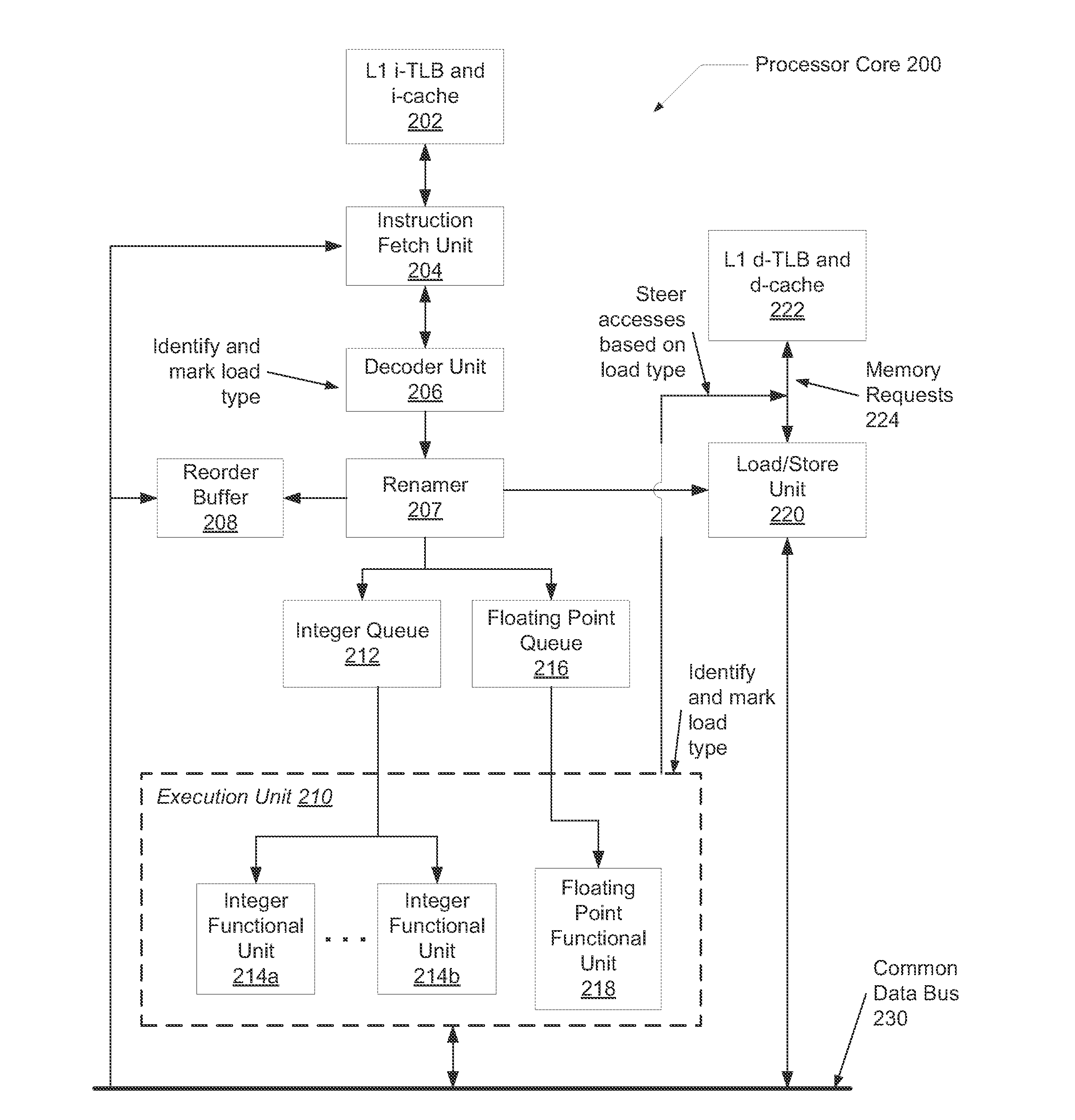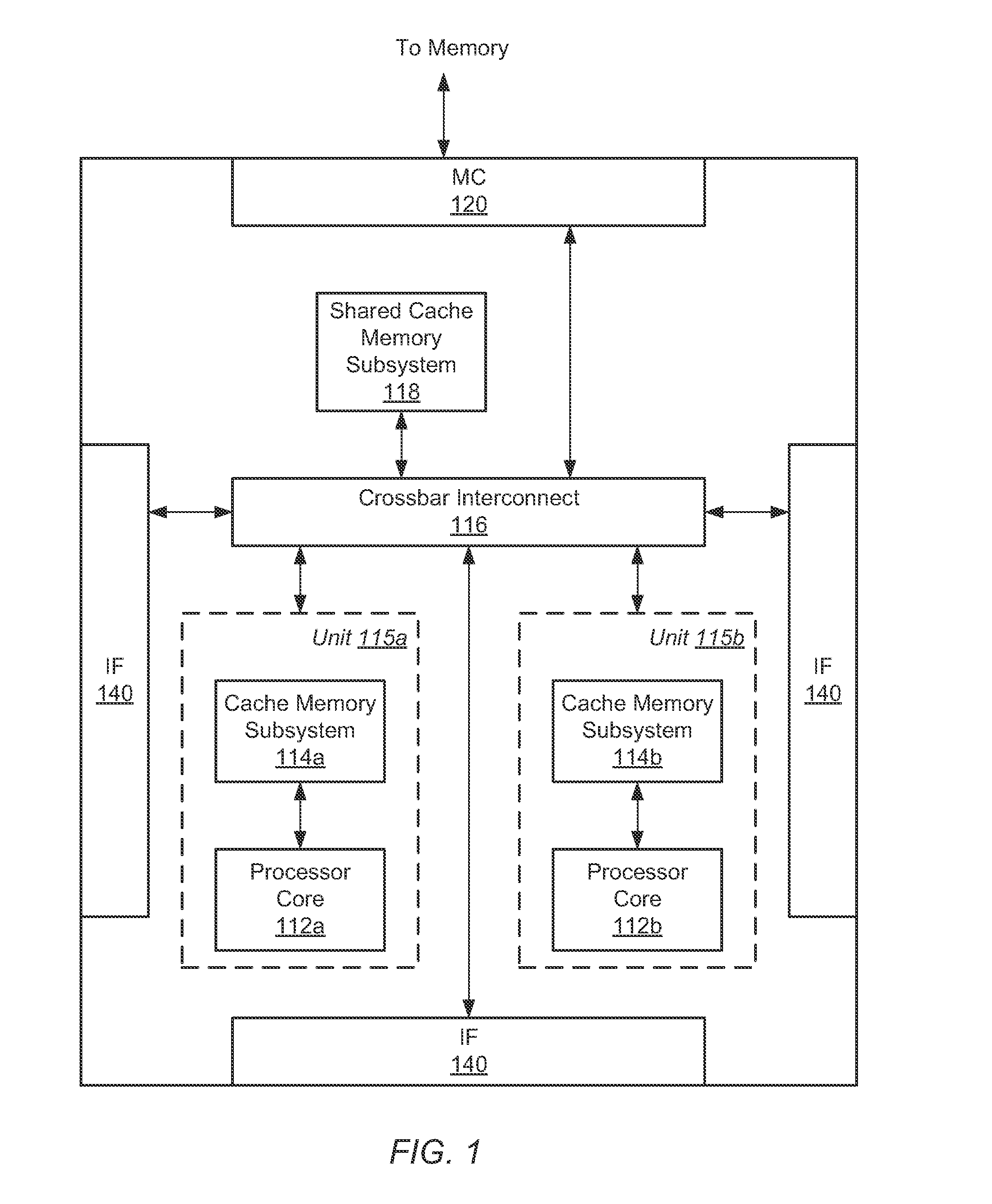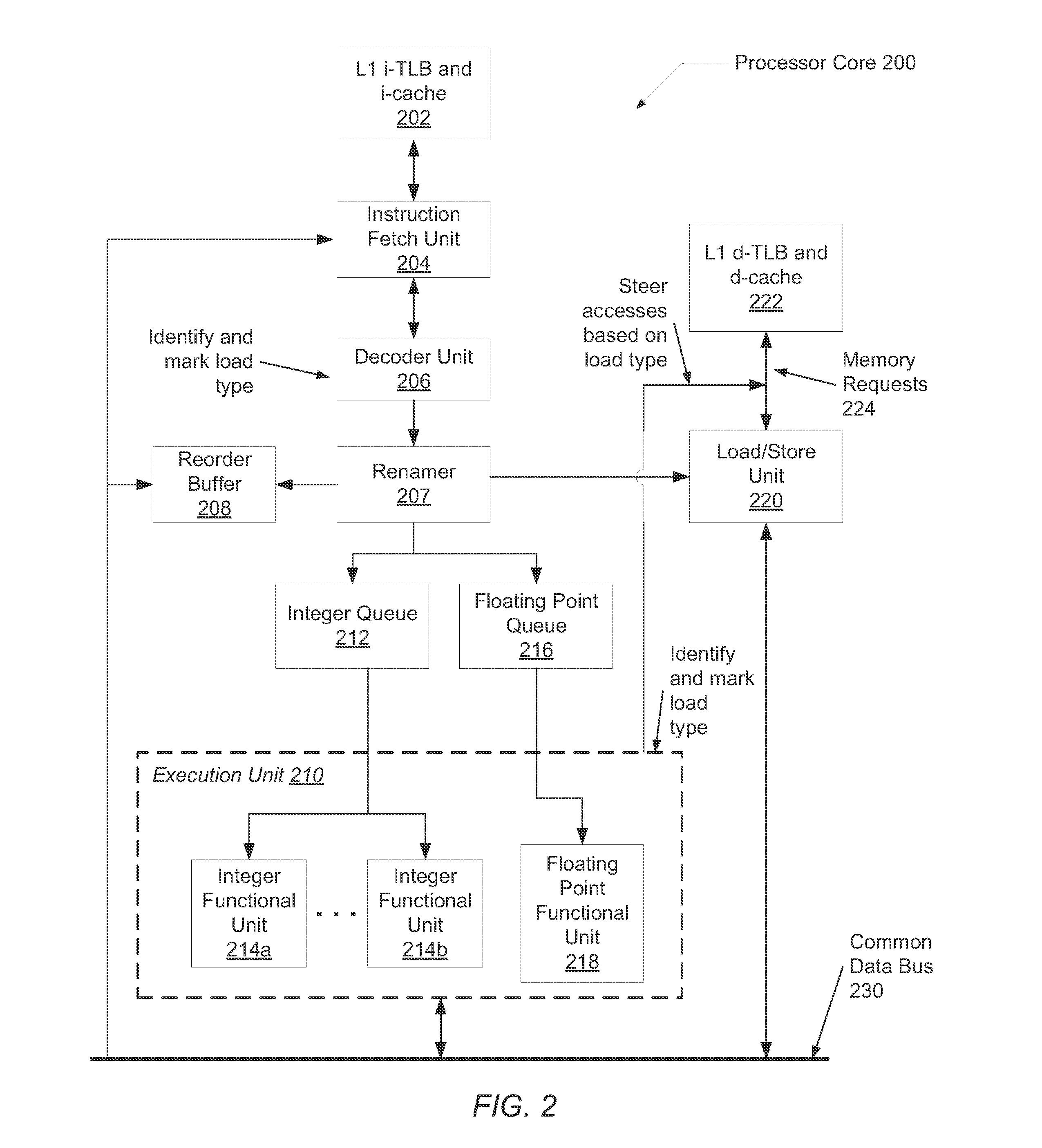Specialized memory disambiguation mechanisms for different memory read access types
a memory read access and memory disambiguation technology, applied in the field of computing systems, can solve the problems of wasting time, stalling, and wasting time, and achieve the effect of efficient prediction and processing
- Summary
- Abstract
- Description
- Claims
- Application Information
AI Technical Summary
Benefits of technology
Problems solved by technology
Method used
Image
Examples
Embodiment Construction
[0009]Systems and methods for efficient predicting and processing of memory access dependencies. In various embodiments, a computing system includes control logic for processing instructions of a computer program. The control logic may determine whether an instruction is a load instruction. In various embodiments, the control logic predicts whether the load instruction is a first type that benefits from data forwarding from the store buffer. One example of the first type is a stack access load instruction. The control logic may predict whether the load instruction is a second type of load instruction that does not benefit from data forwarding from the store buffer. For example, the second type of load instruction may not have high locality corresponding to both read and write accesses. One example of the second type is a non-stack access. A heap access is a subset of non-stack accesses. Multiple criteria may be used for this determination between the first type and the second type. ...
PUM
 Login to View More
Login to View More Abstract
Description
Claims
Application Information
 Login to View More
Login to View More - R&D
- Intellectual Property
- Life Sciences
- Materials
- Tech Scout
- Unparalleled Data Quality
- Higher Quality Content
- 60% Fewer Hallucinations
Browse by: Latest US Patents, China's latest patents, Technical Efficacy Thesaurus, Application Domain, Technology Topic, Popular Technical Reports.
© 2025 PatSnap. All rights reserved.Legal|Privacy policy|Modern Slavery Act Transparency Statement|Sitemap|About US| Contact US: help@patsnap.com



